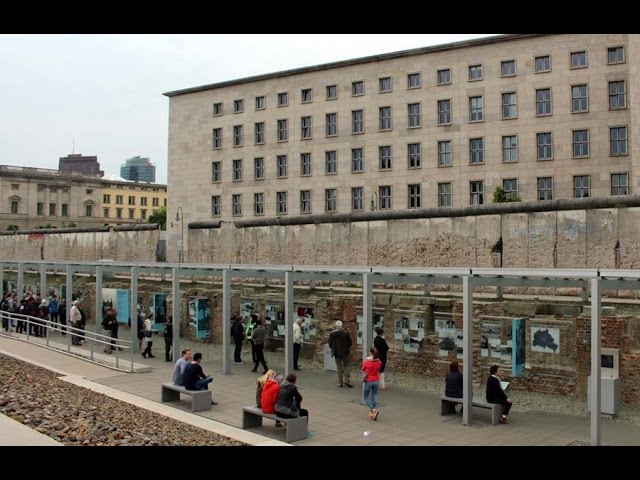Topography of Terror is an outdoor history exhibition that documents the period of the Third Reich, from 1933 to 1945, in Germany. The exhibition is located on the former site of the Gestapo and SS headquarters in Berlin, Germany. It is one of the most important sites for the study of the Nazi regime and its crimes.
The exhibition has several sections, each dedicated to a specific aspect of the Nazi regime. The first section is devoted to the Nazi rise to power and its subsequent consolidation. It examines how the Nazi Party was able to take control of Germany, how it created a police state, and how it was able to use terror to suppress dissent. The second section focuses on the Holocaust and other crimes against humanity committed by the Nazis. It examines the systematic persecution of Jews and other minorities, as well as the mass murder of millions of people in concentration camps. The third section looks at the aftermath of the Nazi regime and the process of rebuilding Germany after the war.
The exhibition also includes a memorial to those who were killed in the Holocaust and other Nazi atrocities. This memorial consists of a wall of names, photographs, and stories of victims. It is a reminder of the millions of innocent people who suffered and died under the Nazi regime.
History of the Site
The site of the Topography of Terror was the former Gestapo and SS headquarters in Berlin, Germany. It was used as a prison and interrogation center during the Nazi regime. The Gestapo was the secret police of the Nazi regime and was responsible for terrorizing and suppressing opposition. The SS was the paramilitary arm of the Nazi party and was responsible for carrying out the Holocaust and other atrocities.
The site was destroyed during the Battle of Berlin in 1945. It was not until the fall of the Berlin Wall in 1989 that the site was uncovered and the ruins of the building were revealed. Since then, the site has been a popular destination for those interested in learning more about the history of the Nazi regime.
Exhibition Features
The Topography of Terror exhibition includes several features that help visitors learn more about the history of the Nazi regime. There are photographs, documents, and artifacts that illustrate the history of the Third Reich and its crimes. There are also interactive displays and video presentations that provide an overview of the period. Visitors can also explore the ruins of the former Gestapo and SS headquarters.
Photographs
The exhibition includes a number of photographs that document the history of the Nazi regime. These photographs show the rise of the Nazi party, the persecution of Jews and other minorities, and the atrocities of the Holocaust. The photographs also document the aftermath of the war, including the rebuilding of Germany.
Documents and Artifacts
The exhibition also includes documents and artifacts from the Nazi period. These include documents from the Gestapo and SS, as well as personal items of victims of the Holocaust. There are also uniforms and other items that were used by members of the Nazi party.
Interactive Displays
The exhibition also includes several interactive displays that allow visitors to learn more about the history of the Nazi regime. These displays include a timeline of the period, an interactive map of Nazi Germany, and a quiz about the history of the Third Reich. Visitors can also explore a virtual tour of the former Gestapo and SS headquarters.
Conclusion
The Topography of Terror is an important site for those interested in learning more about the history of the Nazi regime and its crimes. The exhibition includes photographs, documents, artifacts, interactive displays, and video presentations that provide an overview of the period. The exhibition also includes a memorial to those who were killed in the Holocaust and other Nazi atrocities.
The Topography of Terror is a powerful reminder of the terrible crimes committed by the Nazis and a reminder of the importance of learning from history. It is a place of reflection and remembrance that helps to ensure that the atrocities of the past are never forgotten.

